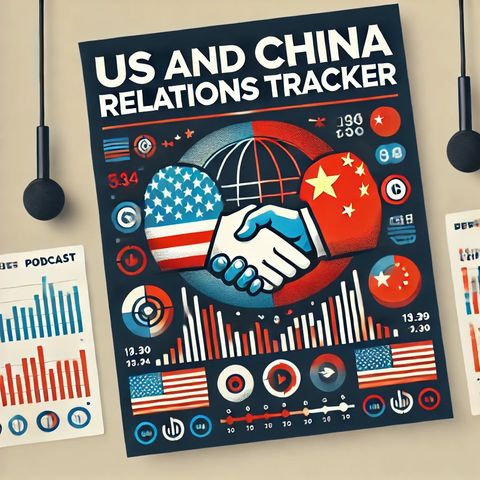15 NOV 2024 · The nature of international relations is ever-evolving, marked by pivotal moments and shifting dynamics. Two significant geopolitical relationships—the US-China relations and the US-German alliance—offer a lens through which we can observe the transformations occurring in global diplomacy and power structures.
US-China relations have long stood as one of the most consequential bilateral relationships in the world. Over the decades, this relationship has been characterized by both cooperation and competition as both nations navigate their global economic and political interests. The US-China dynamic is inherently complex, defined by economic interdependence, technological rivalry, and differing political ideologies. With China’s rapid ascent as a global economic powerhouse and the US maintaining its leadership in international affairs, the relationship becomes a balancing act of competition and cooperation.
Trade between the US and China forms a significant aspect of their relationship, with both countries deeply embedded in each other’s supply chains. Tensions arise from issues such as intellectual property rights, trade imbalances, and tariffs, which have led to what is commonly referred to as the “trade war.” Additionally, the tech rivalry, particularly in 5G, artificial intelligence, and cybersecurity, reflects broader concerns over security and technological dominance.
Beyond economics, the relationship touches on climate change, regional security issues, and global health, as evidenced by cooperative efforts during the COVID-19 pandemic. However, ideological differences over governance, human rights, and the political status of regions like Taiwan and Hong Kong remain significant challenges. These contrasting viewpoints underscore the necessity for dialogue and diplomacy to maintain a stable bilateral relationship that impacts global peace and stability.
Meanwhile, US-German relations have also experienced shifts, especially after the unification of Germany in 1990. This historic event marked a new chapter symbolized by “partnership in leadership,” as Germany transitioned into a unified nation with increased influence within Europe and beyond. The US and Germany found themselves redefining their relationship to address the changing geopolitical landscape.
This partnership has been crucial within the broader transatlantic alliance, emphasizing shared values such as democracy, human rights, and economic cooperation. In recent years, discussions have revolved around trade, defense spending within NATO, and responses to global crises such as climate change and cybersecurity threats. The US-German connection also plays a pivotal role in addressing European security concerns and dealing with countries like Russia and China.
Both bilateral relationships—US-China and US-German—underscore the importance of adaptability and collaborative approaches in an interconnected world. While each presents its own set of challenges and opportunities, they collectively demonstrate the intricate web of international relations that shapes global politics. As the world becomes increasingly multipolar, the US must navigate these relationships with strategic foresight, balancing competition with cooperation to maintain global stability and promote shared prosperity.


